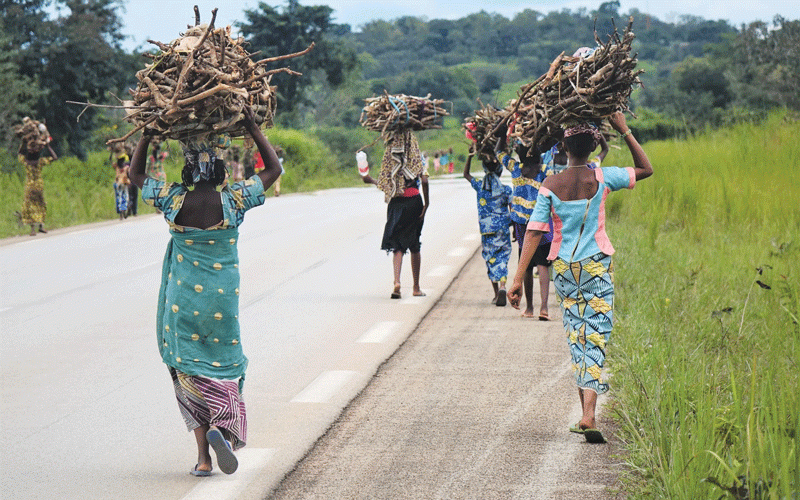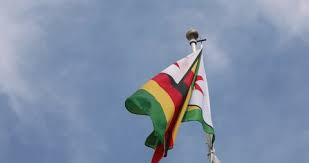
Polygamy has often been romanticised in modern discourse, yet its historical roots are deeply intertwined with economic necessity rather than love or personal fulfilment. This perspective suggests that polygamous structures emerged primarily as a means of ensuring labour and survival in agrarian societies.
Similarly, the institution of slavery, often viewed through moral and ethical lenses, can also be understood as a direct response to labour demands in burgeoning capitalist economies. This instalment explores the economic underpinnings of both polygamy and slavery, whilst investigating how they served as mechanisms for labour acquisition and social organisation.
Historical context of polygamy
In many ancient societies, the family unit was not merely a source of emotional support, but also a fundamental economic unit. The agrarian lifestyle required significant labour to cultivate land, tend livestock and manage domestic responsibilities. In this context, polygamy often emerged as a practical solution to labour shortages.
Childbearing as a source of labour
The biological demands of childbirth are significant and historically, societies faced high infant mortality rates because healthcare as we know it today, was non-existent. By marrying multiple women, the male head of household (HOH) could increase the number of offspring, thereby ensuring a larger labour force in the long run. This was particularly crucial in societies where the survival of the family depended on the ability to produce enough food and resources.
Women’s roles
In many cultures in sub-Saharan Africa, women were primarily responsible for child-rearing and domestic tasks. While this may seem limiting by contemporary standards, it was an essential aspect of family survival. There was a complementarity of roles and responsibilities. The presence of multiple wives, could distribute the burdens of childbirth and child-rearing, reducing the strain on any single woman and allowing for a more sustainable household.
- Open letter to President Mnangagwa
- Feature: ‘It’s worse right now than under Mugabe’: Sikhala pays the price of opposition in solitary cell
- Masvingo turns down fire tender deal
- Human-wildlife conflict drive African wild dogs to extinction
Keep Reading
Social structures
Polygamous arrangements often reinforced social hierarchies and alliances among families. Marriages served to strengthen ties between clans or tribes, facilitating trade and cooperation. This strategic use of marital alliances further underscored the economic motivations behind polygamy, as families sought to enhance their social and economic standing through such unions. To this day, surviving kingdoms in Zululand, in South Africa and eSwatini still embrace these practices.
Transition to slavery
As societies evolved, particularly with the rise of capitalism, the methods of labour acquisition underwent significant transformation. The transition from agrarian economies to capitalist ones where there was mass production, whose output was distributed widely to achieve super normal profits, necessitated a more flexible and immediate labour supply.
Capitalism’s demand for labour
The burgeoning capitalist economy required labour on an unprecedented scale, especially in colonial contexts where rapid resource extraction was the order of the day. Colonial powers sought to maximise profits and the need for a readily available labour force became paramount.
The traditional methods of growing one’s labour force through polygamy were no longer sufficient to meet these demands.
Role of colonialism
Demands of capitalism gave rise to colonialism and slavery. European colonialists viewed Africa and other colonised regions as sources of cheap labour. The transatlantic slave trade emerged as a brutal solution to the labour crisis. By forcibly transporting millions of Africans, colonisers could exploit their labour for agricultural production, mining and other industries without delays associated with traditional family-based labour growth through child-bearing.
Economic exploitation
The institution of slavery was inherently transactional, with enslaved individuals treated as commodities rather than human beings. This dehumanisation allowed for the extraction of maximum profit from their labour, feeding into the capitalist machinery that required constant growth and expansion.
Modern polygamy: Shift in practice
In contemporary contexts, polygamy has diverged from its historical roots. While some modern practices still reflect economic considerations and the generational longevity of family units, many scenarios depict a shift toward personal relationships and emotional dynamics, albeit often within a transactional framework.
Transactional nature
Modern polygamous relationships are frequently characterised by clear economic transactions. The HOH provides financial support to multiple partners. Women rely on the HOH for economic security. Unlike historical polygamous structures that emphasised collective labour and survival, current arrangements sometimes reflect imbalances of power and dependency.
Cultural, societal impacts
The implications of modern polygamy vary widely across different cultures and societies. In some contexts, it retains elements of economic necessity, while in others, it reflects personal choice or cultural tradition motivated by generational family longevity. Be that as it may, the underlying economic motivations cannot be entirely dismissed, as they often influence the dynamics within these relationships.
Examination of modern polygamy
Modern polygamy, often framed within the context of personal choice and cultural expression, warrants a deeper critique that unearths the underlying dynamics of power, dependency, and societal implications. While some proponents argue that contemporary polygamous relationships reflect autonomy and diverse familial structures, a closer inspection reveals a series of challenges that complicate this narrative.
Power dynamics, gender inequality
At the heart of many modern polygamous arrangements lies a significant power imbalance, predominantly favouring the HOH. In these setups, it is not uncommon for a single HOH figure to engage multiple women, establishing a hierarchy where the HOH assumes a dominant role. This dynamic often reinforces traditional gender norms, where women are relegated to subordinate positions, relying on their partner for emotional and financial support. Consequently, the purported freedom of choice can be overshadowed by the constraints imposed by economic dependency, as many women feel compelled to remain in these relationships due to a lack of alternative resources or opportunities.
Transactional relationships
Modern polygamy frequently manifests as a transactional exchange rather than a union based on mutual support and collaboration. This transactional nature invariably leads to a commodification of relationships, where emotional bonds are overshadowed by financial arrangements. As a result, women find themselves in positions where their autonomy is compromised, relying on the HOH for sustenance and stability. This dynamic breeds resentment and dissatisfaction, undermining the potential for genuine intimacy and connection. The relationships become less about shared goals and more about the economic advantages the HOH provides.
Emotional strain, competition
In a polygamous setup, emotional complexities multiply. Jealousy and competition among co-wives create a toxic environment, where individuals vie for attention and resources. This competition erodes the sense of community that might have existed in historical polygamous societies, replacing it with rivalry and discord.
Emotional well-being suffers as women grapple with feelings of inadequacy or insecurity, leading to mental health challenges that are overlooked in discussions about modern polygamy. The notion of sisterhood, which could potentially empower women in these arrangements, is frequently compromised by the very structure intended to support family growth.
Appropriation, misrepresentation
Modern polygamy is often romanticised or appropriated in ways that ignore its complex historical and cultural contexts. In some instances, individuals adopt polygamous practices without fully understanding or respecting the cultural significances behind them.
This superficial engagement serves to dilute the experiences of those for whom polygamy is a deeply-rooted tradition, transforming it into a trend devoid of its original meaning and implications.
Such appropriation further perpetuates stereotypes and misunderstandings surrounding diverse familial structures, neglecting the substantive conversations about consent, equity and agency.
Legal, societal implications
Finally, the legal status of polygamous relationships poses additional complications. In many jurisdictions, polygamy remains illegal, which leads to precarious situations for families navigating legal recognition and rights.
This illegality creates marginalised communities, where individuals lack access to legal protections afforded to monogamous unions. The societal stigma surrounding polygamy further exacerbates these issues, often isolating participants and complicating their efforts to secure rights and resources.
Conclusion
Exploring polygamy and slavery through the lens of economic necessity reveals a complex interplay between social structures and labour demands. While romanticised narratives obscure the historical realities of these institutions, understanding their economic foundations provides valuable insight into human behaviour and societal organisation.
The transition from polygamous arrangements to systems of slavery highlights the adaptability of social structures in response to changing economic landscapes.
In contemporary discussions of polygamy, it is crucial to recognise these historical contexts, as they inform the ongoing dynamics of power, dependency and economic exchange that persist in modern relationships.
The critique of modern polygamy reveals a tapestry of challenges that merit careful consideration.
While it may be portrayed as a progressive choice reflecting personal freedom, the reality often encompasses power imbalances, transactional relationships and emotional strains that complicate this narrative.
Understanding these dynamics is crucial for fostering more equitable and supportive familial structures, which genuinely prioritise the well-being of all individuals involved.
- Ndoro-Mkombachoto is a former academic and banker. She has consulted widely in strategy, entrepreneurship and private sector development for organisations that include Seed Co Africa, Hwange Colliery, RBZ/CGC, Standard Bank of South Africa, Home Loans, IFC/World Bank, UNDP, USAid, Danida, Cida, Kellogg Foundation, among others, as a writer, property investor, developer and manager. — @HeartfeltwithGloria/ +263 772 236 341










